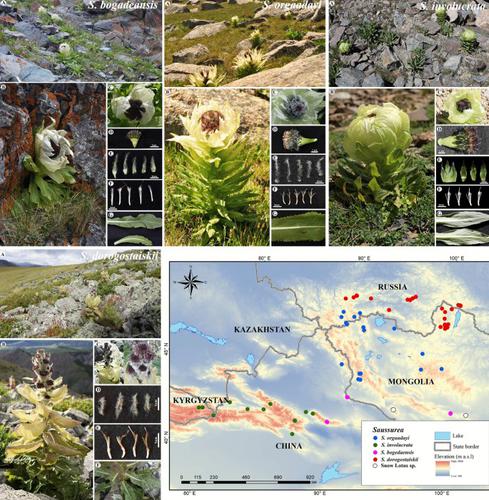Functional & Integrative Genomics ( IF 2.9 ) Pub Date : 2024-02-23 , DOI: 10.1007/s10142-024-01309-y Nudkhuu Nyamgerel , Shukherdorj Baasanmunkh , Batlai Oyuntsetseg , Zagarjav Tsegmed , Gun-Aajav Bayarmaa , Georgy Lazkov , Elizaveta Pyak , Hee-Young Gil , Inkyu Park , Hyeok Jae Choi

|
Four species of Saussurea, namely S. involucrata, S. orgaadayi, S. bogedaensis, and S. dorogostaiskii, are known as the “snow lotus,” which are used as traditional medicines in China (Xinjiang), Kyrgyzstan, Mongolia, and Russia (Southern Siberia). These species are threatened globally, because of illegal harvesting and climate change. Furthermore, the taxonomic classification and identification of these threatened species remain unclear owing to limited research. The misidentification of medicinal species can sometimes be harmful to health. Therefore, the phylogenetic and genomic features of these species need to be confirmed. In this study, we sequenced five complete chloroplast genomes and seven nuclear ITS regions of four snow lotus species and other Saussurea species. We further explored their genetic variety, selective pressure at the sequence level, and phylogenetic relationships using the chloroplast genome, nuclear partial DNA sequences, and morphological features. Plastome of the snow lotus species has a conserved structure and gene content similar to most Saussurea species. Two intergenic regions (ndhJ–ndhK and ndhD-psaC) show significantly high diversity among chloroplast regions. Thus, ITS and these markers are suitable for identifying snow lotus species. In addition, we characterized 43 simple sequence repeats that may be useful in future population genetic studies. Analysis of the selection signatures identified three genes (rpoA, ndhB, and ycf2) that underwent positive selection. These genes may play important roles in the adaptation of the snow lotus species to alpine environments. S. dorogostaiskii is close to S. baicalensis and exhibits slightly different adaptation from others. The taxonomic position of the snow lotus species, confirmed by morphological and molecular evidence, is as follows: (i) S. involucrata has been excluded from the Mongolian flora due to misidentification as S. orgaadayi or S. bogedaensis for a long time; (ii) S. dorogostaiskii belongs to section Pycnocephala subgenus Saussurea, whereas other the snow lotus species belong to section Amphilaena subgenus Amphilaena; and (iii) S. krasnoborovii is synonymous of S. dorogostaiskii. This study clarified the speciation and lineage diversification of the snow lotus species in Central Asia and Southern Siberia.



























 京公网安备 11010802027423号
京公网安备 11010802027423号